
The Anglo-French Concorde was co-developed by BAC, a forerunner of BAE Systems, and Aerospatiale, now a part of Airbus, and has a storied history.
New technology was required throughout the plane. A distinctive design innovation was the plane’s droop nose, which was lowered during takeoff and landing to increase a pilot’s view of the runway.
The steering and control systems used an electronic interface known as fly-by-wire. There was a minor argument over the spelling of the name.
Concord was the English spelling of the word, the French was Concorde. In both languages, the word means agreement, harmony, or union. The French version was finally adopted by the British.

Concorde 001 first flight in 1969.
The first flight of the Concorde took place on March 2, 1969, with the first commercial flight almost seven years later, on Jan. 21 1976.
The U.S. barred the Concorde from its airports until the following year. In total, only 20 planes were ever built, including prototypes.
During the Concorde’s planning, there was tremendous interest from numerous airline companies who saw supersonic flight as the next frontier in the aviation industry.
However, unseen overheads and technical adjustments increased the unit costs of the planes with units exceeding $20 million when the Concorde was launched.
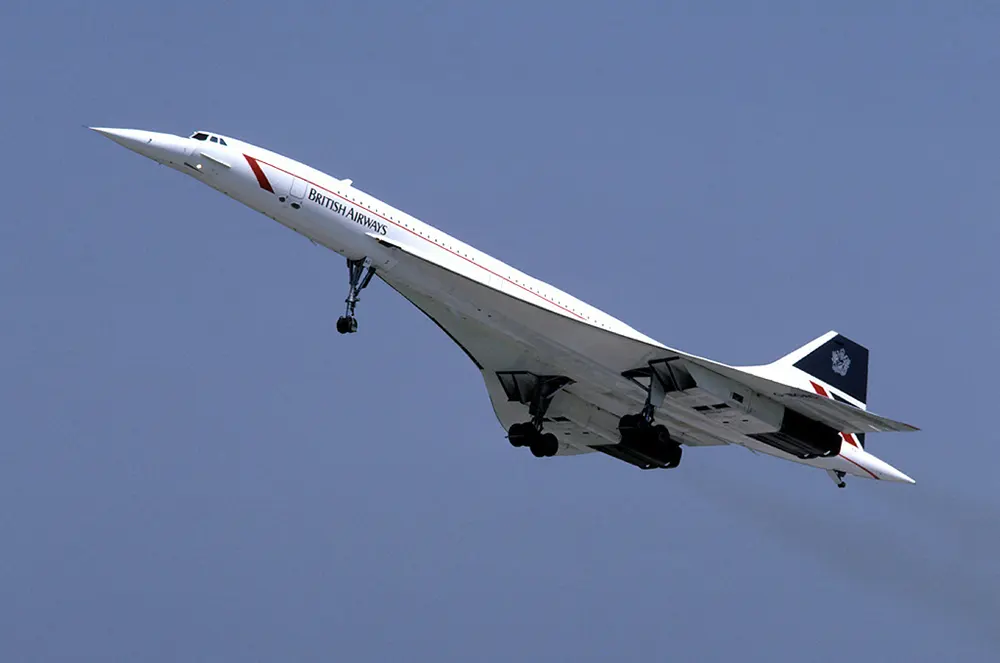
British Airways Concorde in 1986.
This increase in price discouraged many potential buyers from purchasing the units. The Concorde was used primarily for transatlantic flights with the occasional Singapore-Bahrain route used by Singapore Airlines.
It targeted the affluent passenger niche with the London-New York return ticket fetching an average of $8,000.
It wasn’t long after its launching that the Concorde began to experience its decline. During development, the planes had attracted significant interest from airline companies but unit costs during launch proved prohibitive to most.
Another factor dimming the plane’s appeal was its high fuel consumption rate, especially in comparison to existing alternatives such as the Boeing 747 and 707.
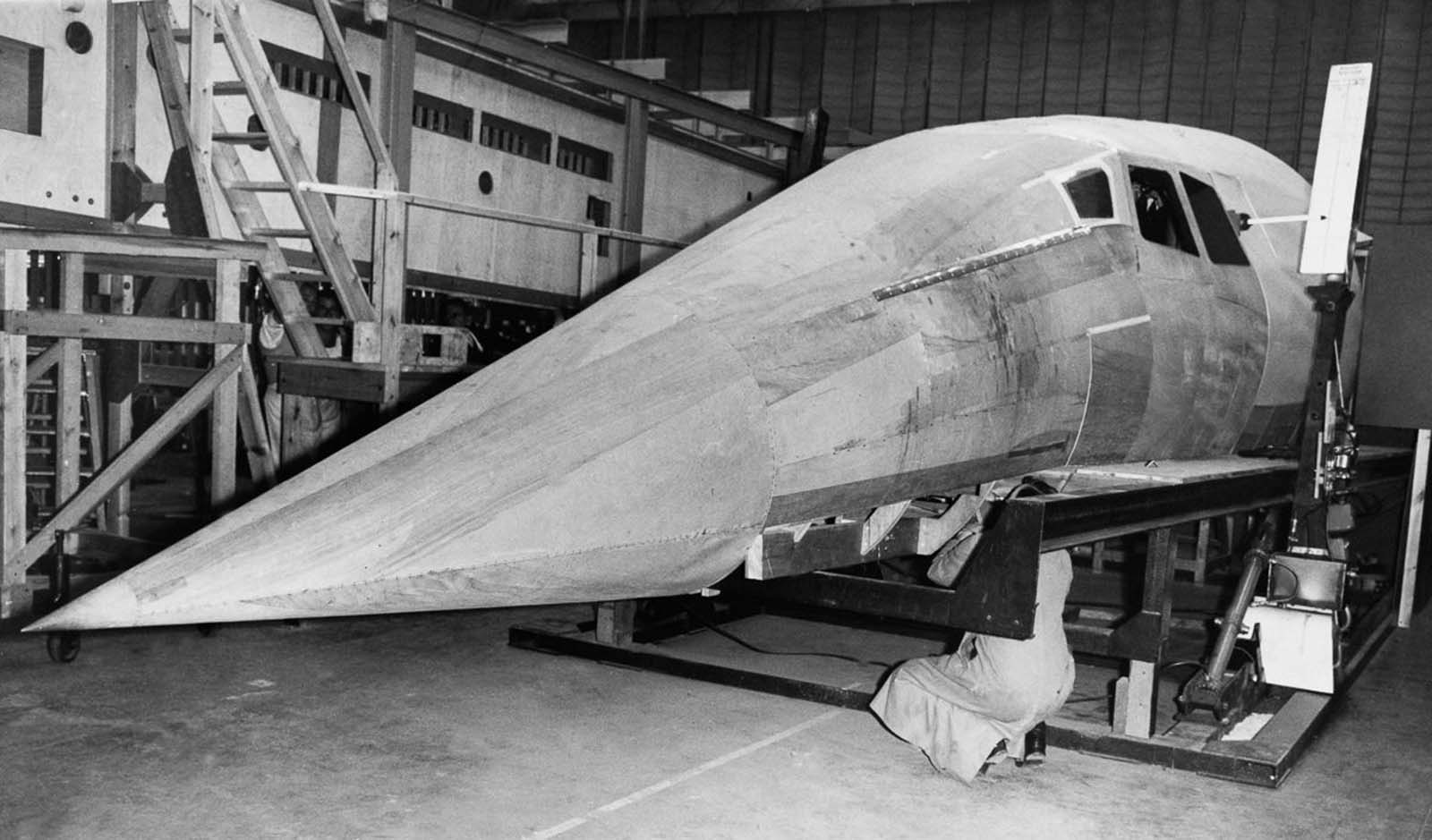
A wooden mockup of the Concorde nose and cockpit under construction at Filton factory in Bristol. 1963.
The Concorde had a passenger capacity of 100 people and consumed over 89,000 liters of fuel for the transatlantic flight while the Boeing 747, with a capacity of more than 400 passengers consumed around 59,000 liters over the same distance.
The oil crisis of 1977 drove global oil prices to unprecedented peaks and further compounded the issue. In the late 20th century, Concorde’s competitors Boeing and Airbus made many improvements in the accommodation of passengers, including the increase of seating space and provision of better in-flight entertainment.
This left speed as the Concorde’s primary advantage over other types of aircraft. This supersonic speed, however, also proved to be a demerit for the plane.
With speed came a supersonic boom which according to some researchers affected residents under its flight path and was deemed an environmental pollutant.
Another significant event that increased the public apathy towards the Concorde was the July 2000 Air France accident where a Concorde crashed in France killing all passengers and crew onboard.
September 11, 2001, terrorist attacks brought with it a decline in overall aviation passenger numbers. On April 10, 2003, British Airways and Air France publicly announced the ceasing Concorde operations that year.

A model lineup of the various designs suggested for the shape of the Concorde, with the eventual design at the far end of the row.

On November 29, 1962, the governments of France and Great Britain signed a concord agreement to build a supersonic jetliner, hence the name of the plane that resulted: Concorde.

A Concorde model at the Farnborough Air Show Exhibition in England. 1962.

On the factory. 1963.

Designers and passenger stand-ins in the cabin of the Concorde. 1964.

Workers clean the fuselage of a Concorde prototype. 1967.

Workers on the wing of a Concorde prototype. 1967.

A Concorde prototype undergoes vibration tests in Toulouse. 1967.

As part of the agreement, the Concorde was built in the UK and France.

The engine selected to power the Concorde was the Olympus 593 turbojet, developed by Rolls-Royce/Bristol Siddeley and Snecma.

Pilots and flight attendants from airliners which have ordered the Concorde stand in front of the plane at the official roll-out ceremony in Toulouse. 1967.

A full-scale wooden model of the Concorde on display. 1967.

Queen Elizabeth II visits the factory where the Concorde is being developed. 1966.
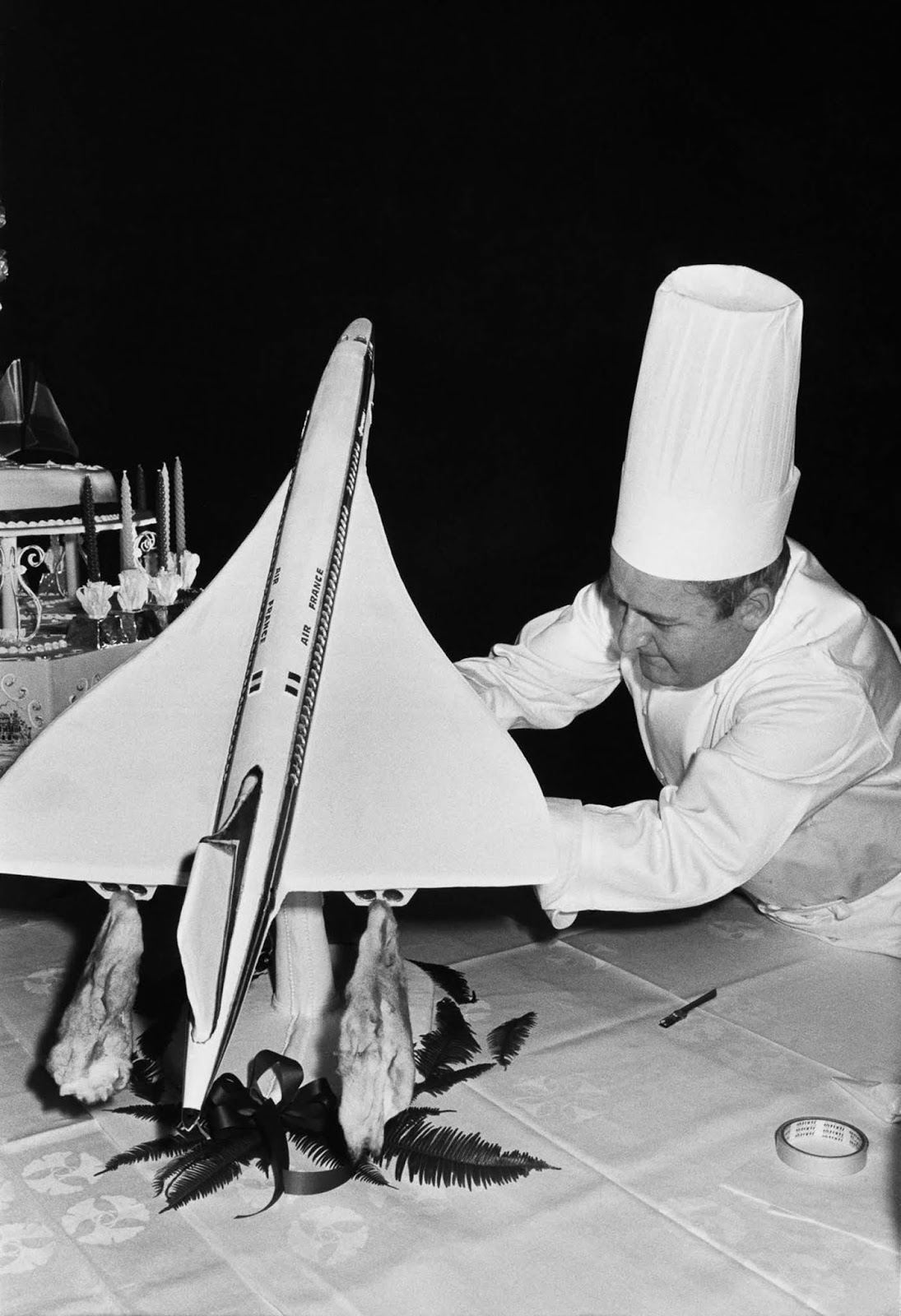
A sugar model of the Concorde. 1965.

An early test of a Concorde prototype. 1968.

A model with makeup and hairstyle inspired by the Concorde. 1969.
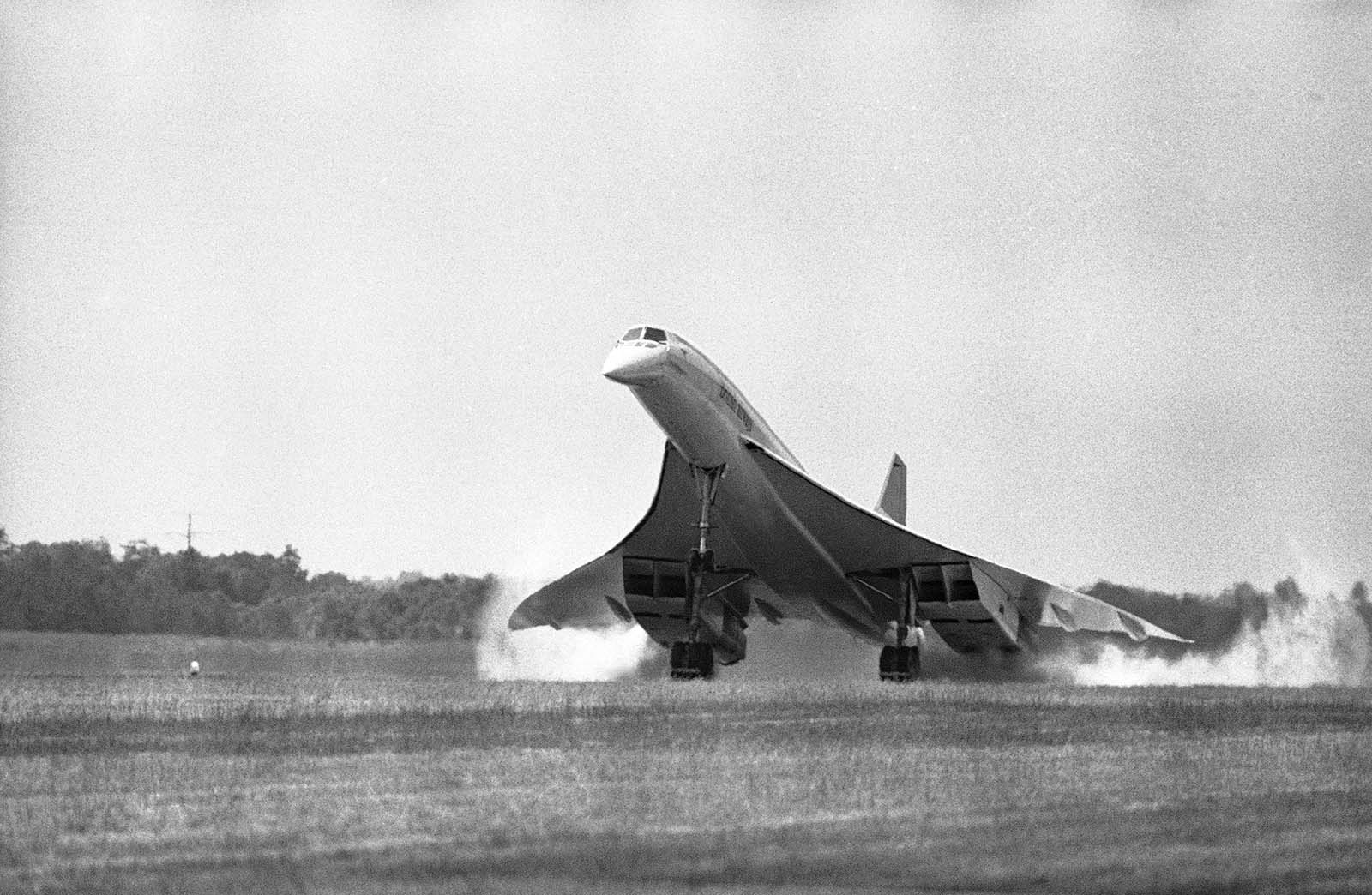
The Concorde.

The Olympus engine’s afterburners gave the Concorde its signature smoky takeoffs. Each engine produced 38,000 pounds of thrust.

The Concorde had features found on no other Western commercial airliner, such as the double delta wing.

The Concorde was operated by a crew of three: two pilots and a flight engineer.

In 1967, the Concorde was presented to the public for the first time in Toulouse, France.

The first Concorde prototype made its maiden flight in March 1969.

More than a dozen airlines from around the world placed orders for the jet.

In addition, residents near airports that were home to the Concorde fleet protested the amount of noise generated by the plane’s four massive turbojet engines.

In the beginning, the 100-passenger interior was simple and a bit austere.

On July 25, 2000, an Air France Concorde burst into flames and crashed shortly after taking off. The plane caught fire after a blown tire ruptured the Concorde’s fuel tanks, and 113 people died in the crash.

By the Spring of 2003, Air France and British Airways announced their intention to permanently retire the Concorde fleet.
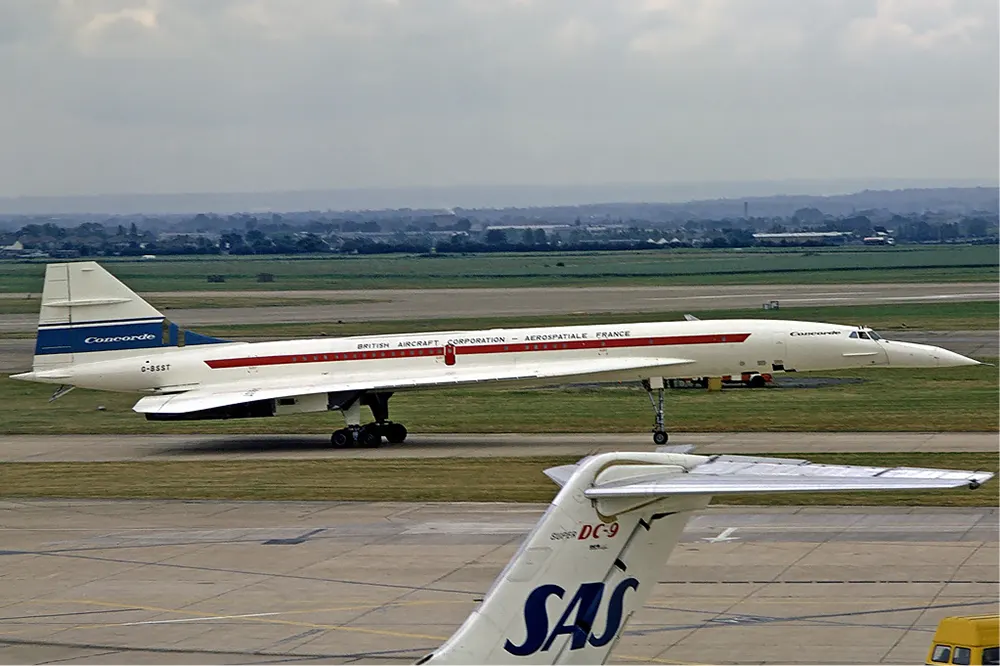
Concorde on early visit to Heathrow Airport on 1 July 1972.
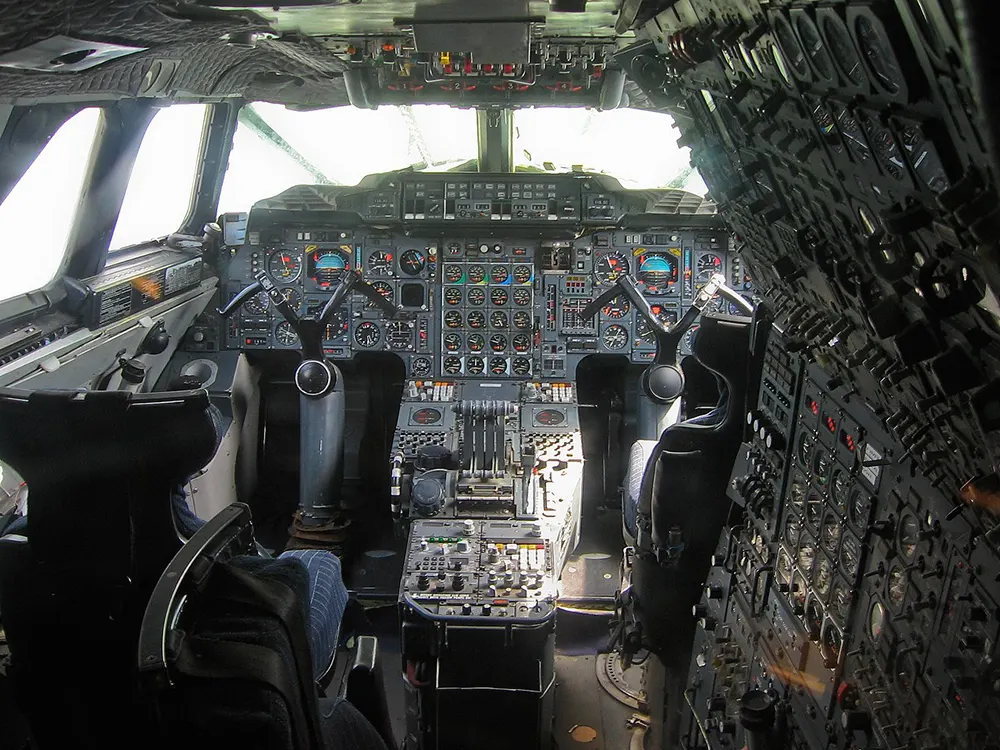
Concorde flight deck layout.
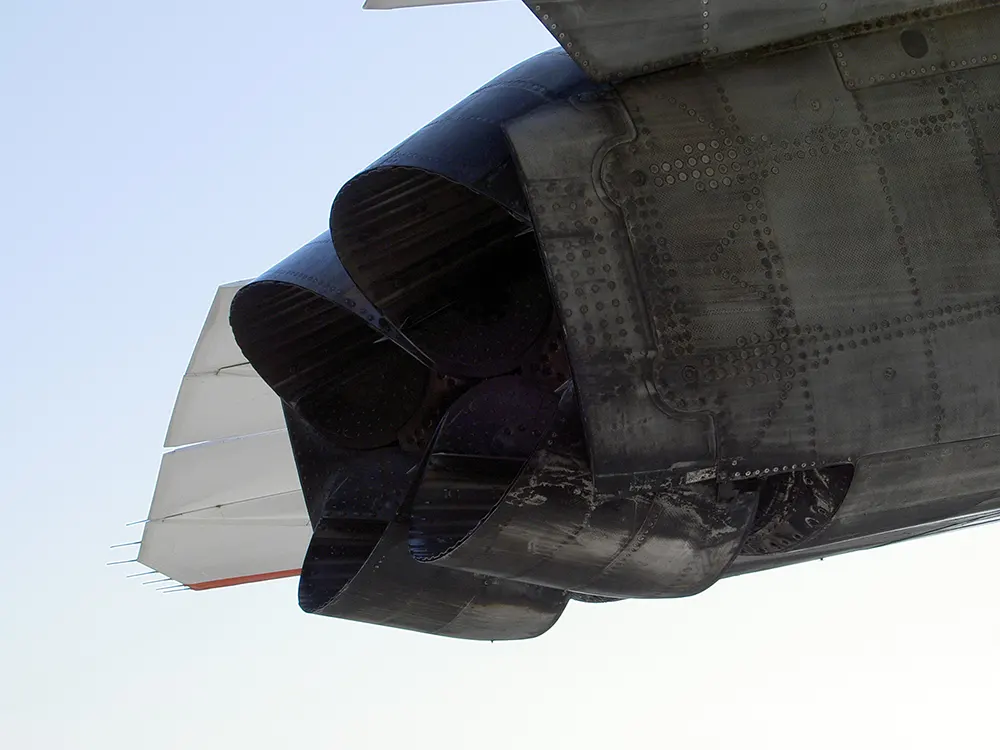
Close up of engine nozzles of production Concorde F-BVFB. The nozzle consists of tilting cups.

Concorde landing at Farnborough in September 1974.
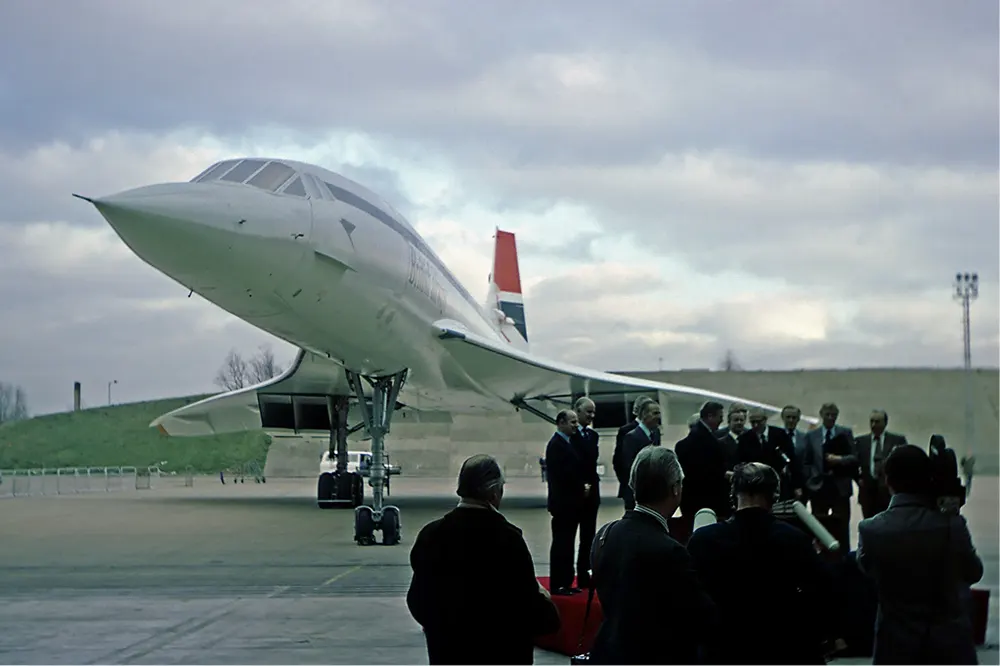
The official handover ceremony to British Airways of its first Concorde occurred on 15 January 1976 at Heathrow Airport.
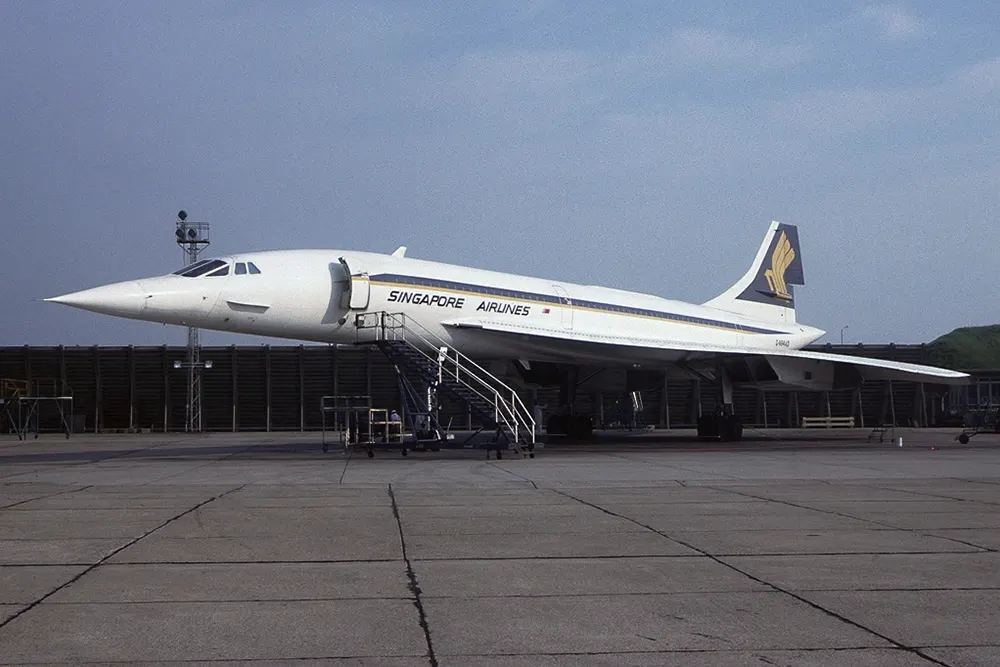
British Airways Concorde in Singapore Airlines livery at Heathrow Airport in 1979.

Air France Concorde at CDG Airport in 2003.
(Photo credit: Wikimedia Commons / AP / National Archives / Library of Congress / Getty Images).
Updated on: January 29, 2023
Any factual error or typo? Let us know.



